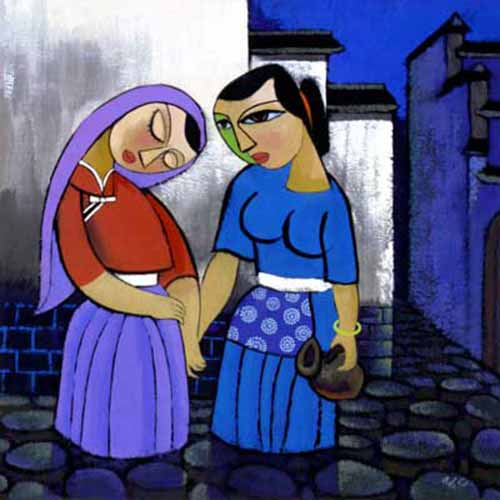
Advent is a little late on the scene. The Council of Saragossa (Spain, 380AD) is the first reference to a preparatory period before celebrating the Incarnation. Fasting and daily church going was required from December 17 until Epiphany (Theophany, January 6th – the celebration of the Incarnation in those days in that and other regions).
Then, mimicking the preparation before Easter, the Synod of Mac (France, 581) decreed that from November 11 (Feast of St. Martin) until December 24 fasting be three times a week (Monday, Wednesday, Friday) [often called “St Martin’s Lent”).
Rome, ever conservative, did not introduce an Advent preparatory period until the sixth century. It was less penitential than the Lenten preparation.
The Gelasian Sacramentary (often mentioned on this site), was the first to provide Advent liturgies for five Sundays (the origin of the “Stir Up” Sunday) [Syrian Jacobites contine a five Sunday preparation period]. Pope Gregory I (d. 604) added prayers, antiphons, readings, and responses, and Pope Gregory VII (d. 1095) reduced the number of Sundays in Advent to four (followed by Western Christians, Copts, and Nestorians). Starting the Church Year on the first Sunday of Advent was a ninth century development.
The Council of Constantinople (1166) decreed that a fast begin on November 15 and last until December 24 inclusive – clearly paralleling the forty days of Lent. That Eastern preparation is often referred to as “Phillip’s Fast” because it begins on the day after the feast of St. Phillip.
The origin of the Advent Wreath seems to be sixteenth century German Lutherans. Increasing baroque and complicating tendencies means that some people are now naming the individual candles – and the cluttering of liturgy continues – often these late accretions become the primary focus, further bedded in by the obsession with “themes”.
Holding penitence and joyfulness in tension is a foundation of this season. There is a similar tension between preparing for the celebration of Christ’s birth (itself a relatively late arrival on the liturgical scene) and preparing for the parousia.
If you appreciated this post, consider liking the liturgy facebook page, using the RSS feed, and/or signing up for a not-very-often email, …
Image source: He, Qi. The Visitation, from Art in the Christian Tradition, a project of the Vanderbilt Divinity Library, Nashville, TN. http://diglib.library.vanderbilt.edu/act-imagelink.pl?RC=46125


